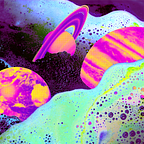The Complicated History of Tattoos as Status Symbols
A mark of humiliation and shame, or a signifier of power and nobility? In the ancient world, body art could be both.
To different cultures at different times in ancient history, tattoos have been signifiers of both very high status — and such low status they’re seen as barbaric and shameful. To some ancient cultures, tattoos symbolised only good things, like magic, power and devotion. To others, they were clear warning signs of criminality and untrustworthiness.
According to Herodotus, writing about Scythian and Thracian people in 450 BCE, “tattoos were a mark of nobility, and not to have them was a testimony of low birth”. Yet to the Ancient Greek and Romans, tattoos were seen as punishment and humiliation. Apparently, the Athenians tattooed owls (to symbolise the owl of Athena) onto the defeated armies as a mark of humiliation and shame.
In the early Mayan civilisation, body modification of all kinds was seen as “pleasing to the gods, for social status and for personal beauty,” according to History on the Net. They went as far as deforming the skulls of newborn babies to achieve a more desirable shape, filing teeth, as well as piercing and tattooing. “The noble class performed as many body modifications as they could, as Mayans believed the more extreme a modification, the higher the status of the individual,” the article continues.
Pre-Incan Chimú people so revered their tattoos, the tools themselves “were often included in the burial of the mummy — which implies that tattooing was held with high regards in the early years of South American cultures,” according to South American Tattooing: Ancient Peru.
In ancient Mexico, “tattooed” ceramic figurines from 100BCE–400 AD are believed to represent stature and respect in the community. According to Christopher Beekman of the University of Colorado, “It is notable that the tattooing occurs prominently around the mouth, which may refer, as it does in Classic Maya society, to the breath of life or the capacity of polished speech of these individuals.’
Mayan clay figurines have prominent tattoos all over their bodies. The elaborate mouth tattoos may symbolise the breath of life, or gifted oration.
However, when we look to the other side of the world, in ancient China, tattoos were highly stigmatised more or less throughout their history. It was common practice for convicted criminals to be branded with a facial tattoo as a warning to other members of society that they couldn’t be trusted as a person. And yet, even in China, there were exceptions to this.
In 1254–1324 AD, Marco Polo wrote of the city of Quanzhou, saying “Many come hither from Upper India to have their bodies painted with the needle in the way we have elsewhere described, there being many adepts at this craft in the city.”
You could argue the wildly different perception of body art was down to different cultures living much more isolated existences than our globalised reality. However, as Marco Polo’s quote states, people travelled to Quanzhou — from upper India to south eastern China — for their body art. That’s not an insignificant journey, even by today’s standards.
In the same part of the world, it seems the Chinese influence changed the course of Japanese tattoo history. Although neolithic dogu figurines show tattooing went back as far as 5,000 BCE, by the 6th century, the Japanese had adopted the prevailing Chinese view of tattoos as barbaric and shameful.
Indeed, the very first mention of tattoos as a form of punishment in Japan was recorded in 720 AD, as follows: “The Emperor summoned before him Hamako, Muraji of Azumi and commanded him saying: You have plotted to rebel and overthrow the state. This offence is punishable by death. I shall, however, confer great mercy on you by remitting the death penalty and sentence you to be tattooed.”
Journey through tattoo history at NAAMA’s Medium — our space to explore the ever-changing human relationship to tattoos, chronicle their complex history, and celebrate the empowering future of body art evolution.
